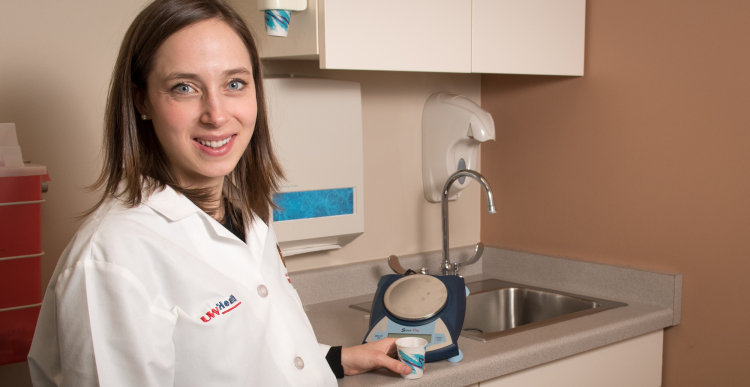New study identifies key symptom-based clusters in Sjögren’s Disease, opening the door to more effective treatments and research

Sjögren’s Disease is a systemic autoimmune disease typified by three cardinal symptoms—pain and dryness (including but not limited to mouth and eyes) and general fatigue. Patients’ experiences, however, are anything but uniform. Appearing in unexpected clusters or on their own, symptoms can range from mild to debilitating, and frequently do not have a clear correlation to objective clinical measurements.
This variability often makes timely diagnosis and effective treatment of Sjögren’s a challenge, especially in the presence of co-morbidities. It also means the disease does not have an FDA-approved therapy.
Fortunately, a new study in Arthritis and Rheumatology, led by Sara McCoy, MD, PhD, associate professor, Rheumatology, establishes a crucial foundation for future research and treatment of Sjögren’s.
Four Primary Symptom Clusters
The new study, Dr. McCoy explains, “aimed to stratify Sjögren’s by its three cardinal symptoms” in order to provide better guideposts for diagnosis, treatment and clinical trials.
She and her co-authors analyzed the symptoms of 1,454 patients in the Sjögren’s International Collaborative Clinical Alliance (SICCA) Registry and 2,920 from a Sjögren’s Foundation survey. They generated four primary symptom clusters based on symptom severity and were able to replicate the clusters across both populations.
Within the four clusters, the authors found patterns of disconnect between patient experience, objective disease activity (as identified by lab test abnormalities), and prescribed treatments.
For example: patients in one cluster reported a higher total number of symptoms than any other cluster, despite having lower levels of objective disease activity than the patients in other clusters. Patients in the cluster also received more treatments than clusters with higher levels of lab abnormalities. As a result, the authors wrote, “patients…had higher medical costs, which were up to twice the costs reported by other clusters.”
A Map for Earlier, More Accurate Treatment
These and other insights affirm the need for a more tailored approach to treatment, as well as the usefulness of symptom clustering as a map to treatment optimization.
“You may want to reach for immune-modulating therapies to treat a Sjögren’s patient in one cluster, but for another symptom cluster you will have more effect with symptomatic therapy,” Dr. McCoy explains.
A cluster map also allows for earlier, more accurate treatments—which in turn can help cut costs and improve patient-provider relationships.
“This idea of having a map for how to approach individualized instances of Sjögren’s really excites me, as I see patients suffering every day without relief or recourse.”
Christie Bartels, MD, MS, associate professor, Rheumatology, was a co-author of the study.
Banner: file photo of Dr. Sara McCoy in clinic. Credit: Clint Thayer/Department of Medicine